LED UV-A blacklights come in several varieties, but some of the most popular ones are the 365 nm and 395 nm wavelength types. Although the difference between them in terms of wavelength is short, the 365 nm vs. 395 nm have several differences. Take a look! We have analyzed the two blacklights in detail, including the applications for each type.
What are 365 nm and 395 nm Lights?
Light is an electromagnetic wave. It is a broad electromagnetic spectrum with different properties at different wavelengths. Since the wavelengths are extremely short, a nanometer (a billionth of a meter) is the unit used to measure them.
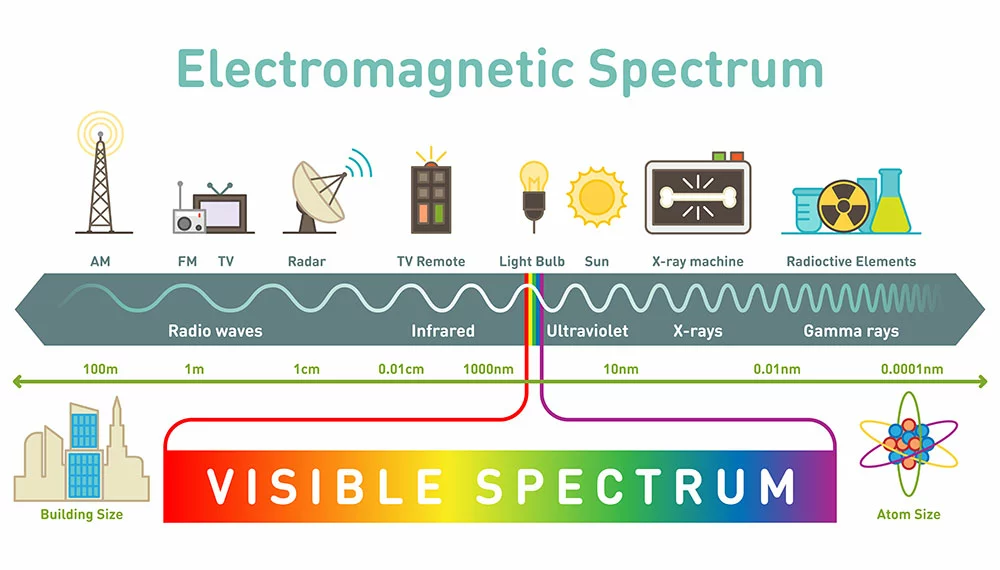
The electromagnetic spectrum
Visible light detectable by the human eye falls in the range of about 400-700nm, and the UV spectrum falls right under it (10-400 nm). Therefore, 365 nm and 395 nm are ultraviolet lights.
Types of UV Light
The visible light spectrum is broad and different colors form within it, ranging from violet on the lower side to red on the higher side. Similarly, the UV light spectrum has several divisions within it.
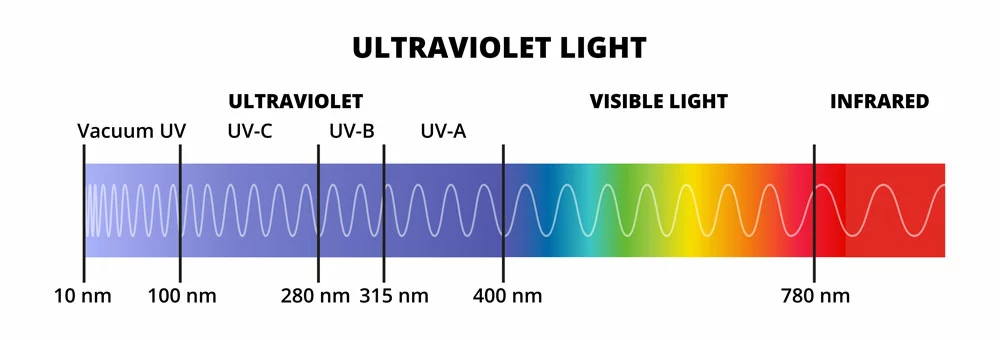
The Vacuum UV, UV-C, UV-B, UV-A, and visible light in the electromagnetic spectrum
Vacuum UV Light
Vacuum UV light falls within the 10-100 nm range. It is best known for photochemistry, nanofabrication, and spectroscopy.
UV-C Light
UV-C is next in line, falling in the 100-280 nm range. This UV light is suitable for several applications, such as water, air, and surface disinfection.
UV-B Light
Lying in the 280-315 nm range is UV-B light. It is ideal for medical training, plant lighting, and tanning.
UV-A Light
UV-A is the closest UV light to visible light because it sits in the 315-400 nm wavelength range. However, it is still invisible, which explains why it is known as blacklight. Blacklight flashlights are ideal for curing paints & plastics and emitting & observing fluorescent effects.
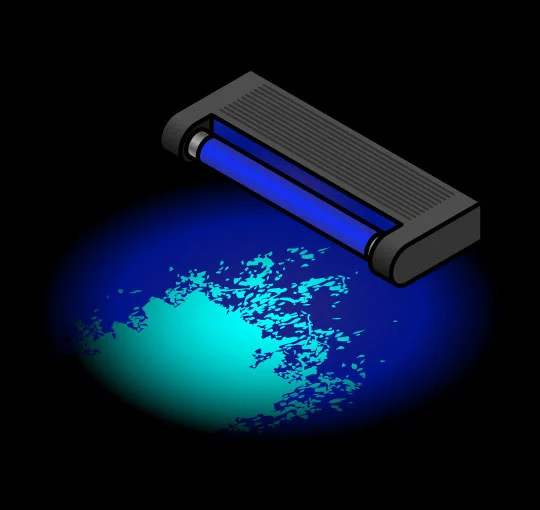
A fluorescing spatter pattern forming after being illuminated by a UV lamp
365 nm vs. 395 nm UV-A Light
365 nm and 395 nm light belong to the UV-A category. However, 365 nm and 395 nm flashlights or lamps do not emit light at only those specific wavelengths.
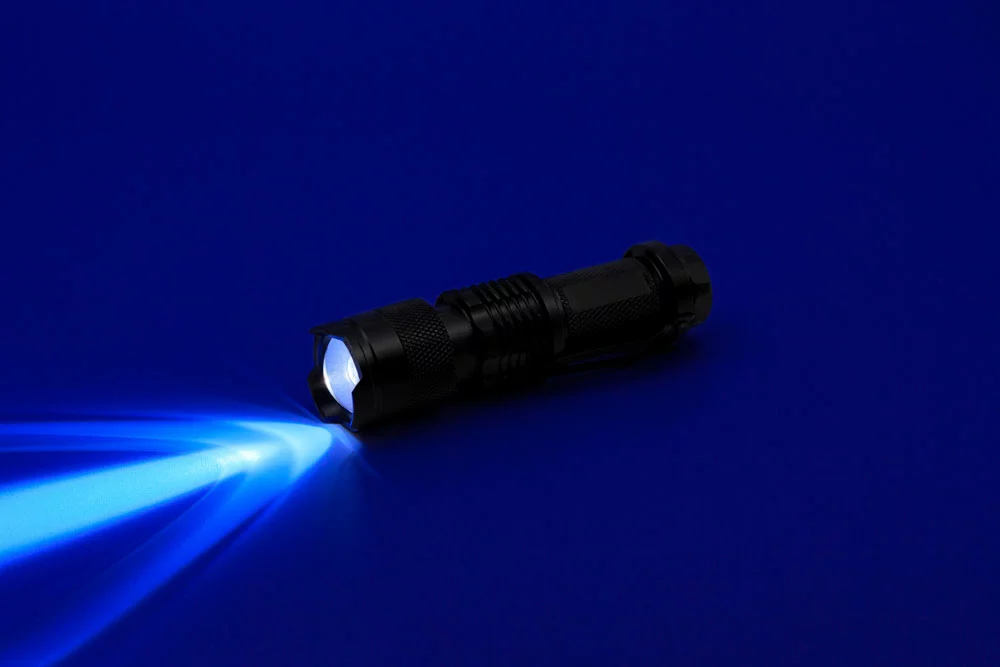
A 365 nm mini UV LED flashlight
It can be higher or lower, meaning 360 or 370 for the former and 390 or 400 for the latter. Therefore, the 395 nm UV light lamp can emit visible light. However, the two emit the most energy at 365 nm and 395 nm, respectively.
Differences in Color and Power
365 nm and 395 nm UV-A lights have fluorescent effects, but the former produces a pale blue-white color while the latter emits a purple glow. Fluorescence means these colors are only visible when the light reflects off a surface, such as a banknote.
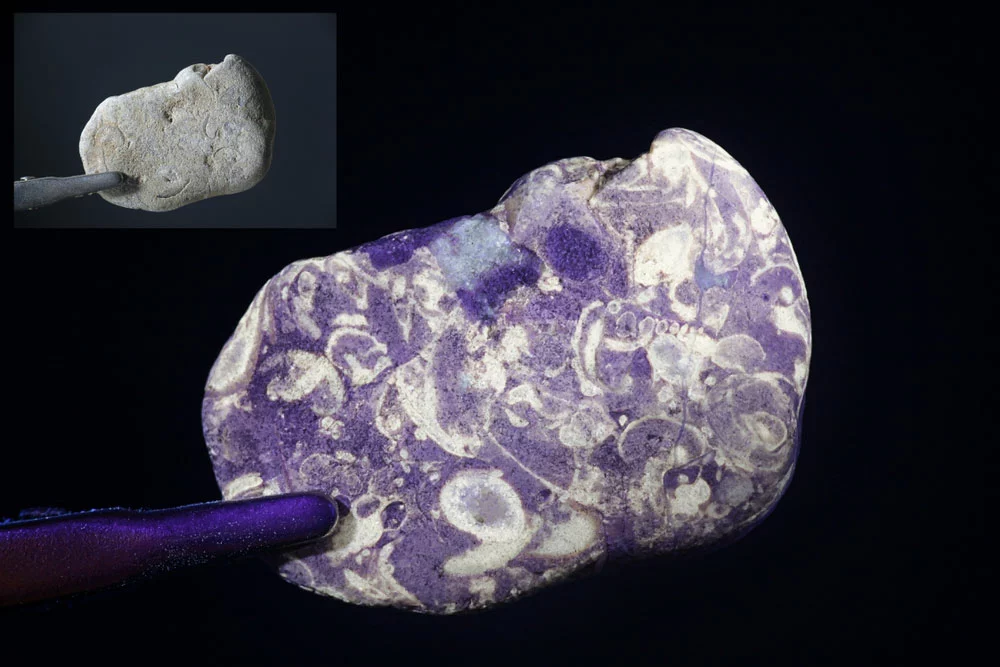
Fossils fluorescing under 365 nm UV light
The purple 395 nm color is brighter because it is closer to the visible light spectrum. However, 365 nm light is more powerful because it better illuminates/highlights cracks, tiny stains, and spots.
Why? Most objects fluoresce when lit with the shorter wavelength light because it doesn’t contain slightly visible purple light.
Differences in Cost and Efficiency
LEDs have a complex manufacturing process, and chips producing 365 nm tend to be more expensive to build. Although the cost can vary depending on the product type, these low wavelength LEDs are usually costlier to manufacture than the 395 nm type. Additionally, they are more inefficient.
Therefore, if you want an intense UV light for precise applications like currency analysis, the 365 nm UV light is better.
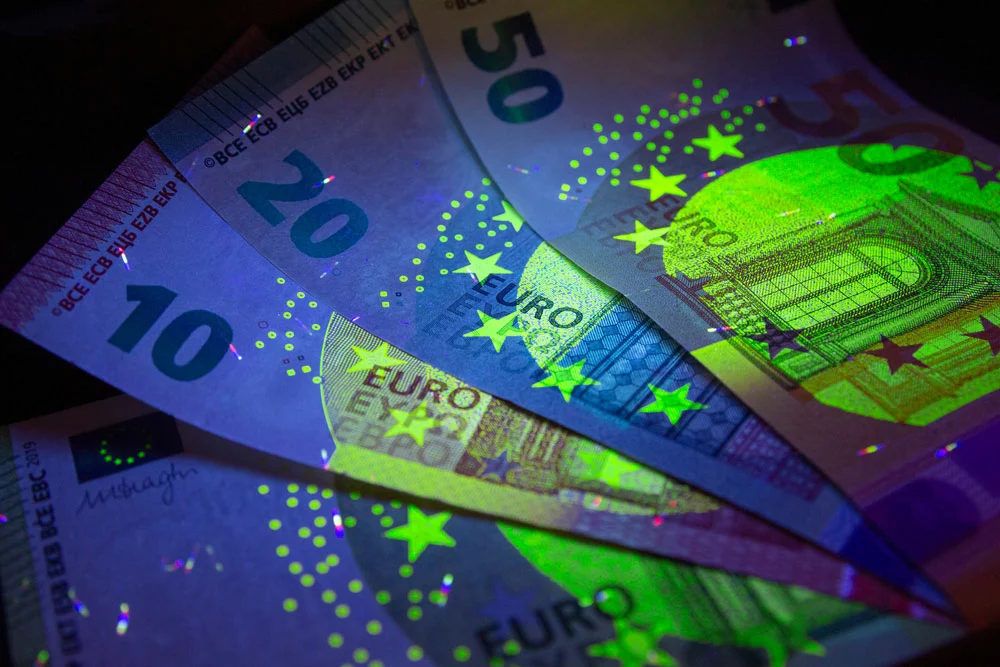
The security features in Euro currency fluorescing under UV light
But if you want a brighter & broader beam and don’t need to illuminate tiny spots/blemishes, the 395 nm LED light is better.
Applications of 365nm and 395nm Light
Generally, UV-A light is ideal for plastic/paint curing and observing fluorescent effects. In the curing application, the 365 nm bandwidth of UV light is suitable for surface curing UV glue and UV varnish. On the other hand, the 395 nm band determines the curing depth and is ideal for UV coatings and UV inks.
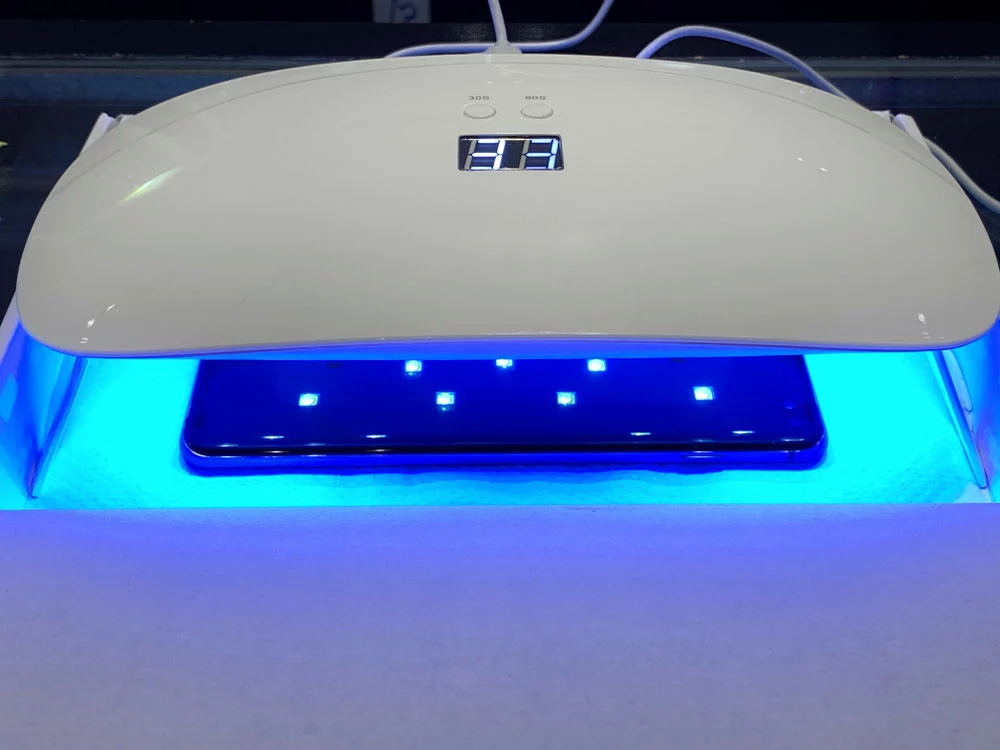
A mobile technician installing tempered glass using a UV lamp to cure the UV glue
With observing fluorescent effects, 365 nm light is better at highlighting tiny spots, stains, and imperfections because it has less visible light. Therefore, it is ideal for detecting the following.
- Forged documents
- Counterfeit currency
- Car fluid leaks
- Dirty stains in kitchens during inspections
- Pet stains in carpets
- Blacklight security inks
- UV markings on a driver’s license
- Salmonella bacteria
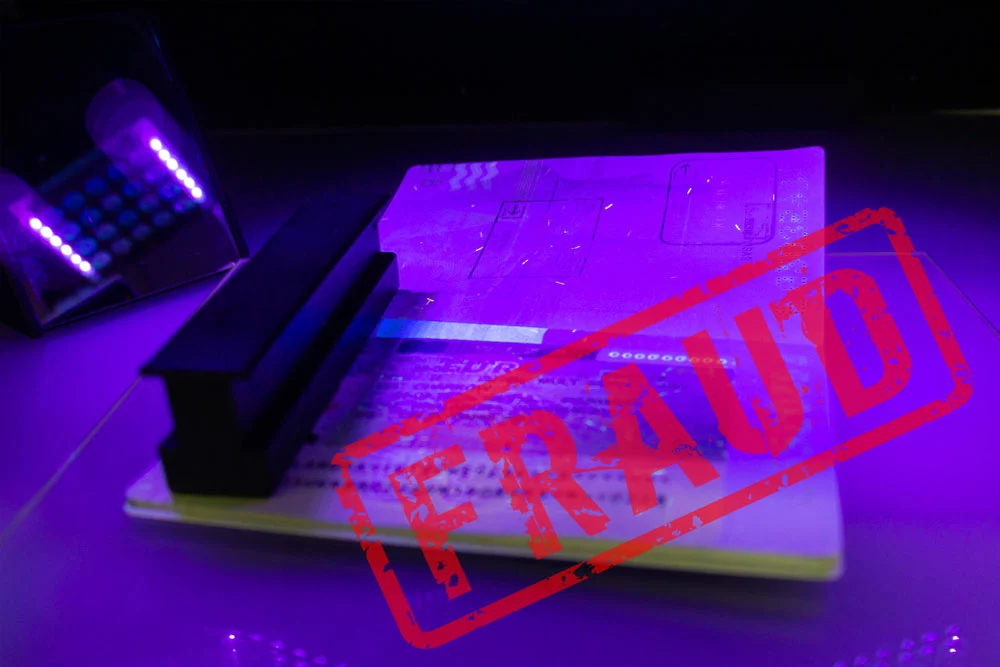
Passport visa checking using UV light to identify the protective elements or security features
395 nm light overlaps some of the applications of 365 nm light because the difference is about 30 nm or less. Its applications include the following:
- Bathroom and carpet inspection
- Animal urine, and human urine detection
- Arson investigation
- Contamination inspection
- Mineral hunting (like diamonds)
- Coolant (A/C) leak detection using a dye

Car A/C servicing (using a UV lamp to detect freon leaks)
Wrap Up
There you have it! After a detailed comparison between 365 nm and 395 nm light, you should be able to differentiate between the two and pick the best UV-A wavelength for the job. If you have any questions or comments, don’t hesitate to contact us for further clarification.
